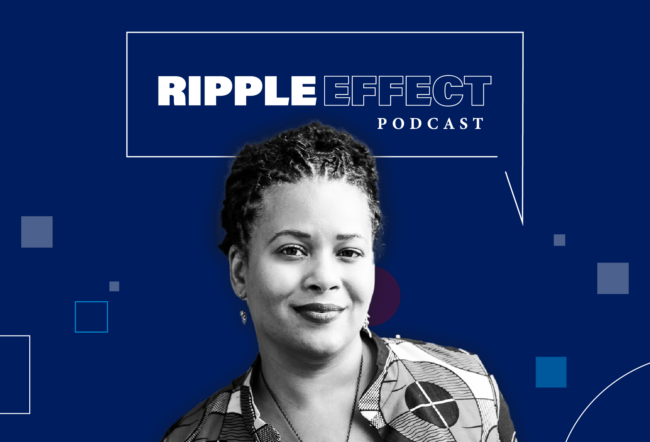In 1997, Cargill – the largest closely held company in the U.S. with revenues of $60 billion and 79,000 employees worldwide – appeared on the front page of the Wall Street Journal as a prime example of the advantages that can accrue to privately-held businesses. Cargill, the Journal noted, had been able to expand its processing business abroad precisely because management didn’t have to defend its strategy to outside investors and securities analysts. That allowed the company the luxury of, for example, sustaining seven years of losses in India and weathering anti-Western protests before finally turning a profit. By the time the Journal caught up with Cargill, the majority of whose stock was then owned by about 80 members of the founding families, it had more than $8 billion in assets in 65 countries and traded with nearly 100 more. Its foreign assets were approximately 40% of its total, compared to 18% for rival Archer-Daniels-Midlands Co. Reflecting at one point in the article on the company’s recent successes, CEO Ernest Micek had this comment: Doing business the Cargill way “takes patience…” Timothy G. Habbershon, director of Wharton’s
The study, sponsored by Banco Popular, Puerto Rico, links the relationship dynamics between shareholders to the risk perceptions of holding their shares. “Most people don’t think about shareholders of privately-held companies as having a risk profile, but they do,” Habbershon says. During FCCP seminars, he often asks these shareholders how the risk of holding their family shares compares to the risk of holding shares in a public blue chip company. “It gives us a baseline measure of their risk profile. We are then able to analyze the factors that affect risk perceptions,” Habbershon says.
This issue is important to family business owners mainly because part of their potential for a competitive advantage is linked to shareholder efficiencies. “Suppose that risk is perceived as being high – because, for example, the shareholders no longer trust each other or don’t share a common vision for the company or differ on long-range financial goals,” Habbershon says. “Then they might insist on selling their shares or taking the company public, two courses of action that could have a potentially negative effect on the company’s future.”
If a decade ago, Cargill’s shareholders had demanded an exit strategy for themselves, Habbershon adds, the only way the company could have met their liquidity demands would have been to go public, like Estee Lauder did three years ago. “That obviously changes the value creation calculus of the firm. Going public isn’t necessarily a bad strategy, but if you are forced into an ownership strategy because of disunity among the shareholders, then you are going to lose some of the inherent efficiencies of being a privately-held company, especially if the shares have no marketability.” [Even at Cargill in 1997, the Journal article pointed out, certain family shareholders were exploring the possibility of cashing in some of their holdings. One strategy being discussed was taking the company public.]
Two more recent examples illustrate Habbershon’s point. One involves a family-owned food manufacturing company that has a particularly unified shareholder group. “Their risk profile is fairly low, their trust level is high, and they function effectively as shareholders. Because of that they are committed to reinvesting 90% of their earnings in the company and distributing 10%. It’s a good example of patient capital translating into operating efficiency.
“Change that scenario to one where the trust level is low, as is true in a company we work with in Latin America. The shareholders don’t agree on the long-term strategy of the company and they have split off into factions. One whole group – one fifth of the shareholders – is now demanding liquidity, at a time when the company needs to expand operations in order to compete globally. The risk profile is high and patient capital has become demand capital.”
Part of the FCCP’s research focuses specifically on relationship dynamics – the so-called ‘soft side’ issues in family-controlled companies that include, for example, trust levels among shareholders, goal agreement, a participatory culture and views on the long-term health and competitiveness of the business. “We show that these relationship issues are directly linked to the risk perceptions of shareholders which in turn have a direct impact on the company’s cost of capital and its overall ability to create wealth.”
And yet, Habbershon says, “very few family business members, especially those who are family leaders, want to invest time in building unity among shareholders and professionalizing the strategies and structures through which they interact.” One group that did is El Nueva Dia, a San Juan, P.R. newspaper company that participated in the study and that is owned by the Ferre family, which also controls a public cement company, printing company and Internet company. CEO Antonio Luis Ferre has run the business for 30 years. Over the past decade, he has set up a system of family meetings designed to empower his five children as future leaders of the company. Recently he started holding management retreats for the senior management team – including non-family members – as a way to improve communication and break down the typical restraints that exist in a hierarchical management system.
“All this was a direct result of the family shareholder group’s efforts to develop trust, unity and agreement between the family members and between the shareholders and management,” Habbershon says. “The company has thrived and expanded, and the value of the company has increased dramatically…Only in privately- or closely-held shareholder groups does the possibility exist for these shareholders to personally impact the resource pool of a business, capitalizing on their agency efficiency.”
So why do so few family-controlled companies focus on relationship dynamics and risk profile issues? Habbershon cites three reasons:
First, because they are considered ‘soft side’ issues, they have not been factored into most business people’s education or background, he says. “Managers are trained in content-based leadership where decisions are made in a rational, linear way. They don’t see that effective process skills are necessary for success.
“We say that a firm needs four resources in order to compete: physical, organizational, human and process. What we are talking about here is process. It’s the commitment and capabilities that individuals and groups have for effective interactions. If you increase your process resource pool, you enhance the other resources in the organization.”
Second, business leaders are told, and intuitively feel, that they have to build a wall between the family and the business, Habbershon says. “It is true that if there is the potential for conflict in the family firm it is between the family and the business, but it is also true that if there is a potential for competitive advantage in privately-held family-controlled companies, it is only because there is interaction between the family and the business. So our whole goal is not to build a wall.
“We are working now with a Latin American company in which the consultant put up a wall that we are in the process of taking down. Most consultants define professionalization as getting the family out and bringing professional managers in; we define it as setting up the structures and guidelines that manage the interaction of the family with the business. Because if you don’t, you lose the potential for capturing part of your inherent advantage.”
Third, companies don’t deal with building relationship capital because their roots are familial, not business-oriented, Habbershon says. “It’s very hard to transition intuitive familial dynamics into intentional business strategy. Families develop communication styles, for example, that then get translated into the business. So if you are a family that shouts at each other at home, where it might not mean much, you probably don’t realize there are costs to this behavior when it is done in front of employees.”
Which raises the question of family relationships in general. Are some more problematic than others, and what is the impact of that? The key dynamic, Habbershon says, “is moving from a parent-child to a peer relationship – for example, a parent treating a child as a peer and the child treating a parent as a peer. It’s the hardest transition to make in a family company, and the consequences of not doing it can be devastating. Consider the Dart Group, for example,” whose CEO/founder Herbert Haft removed his son and presumed heir Robert Haft from the board and fired him from executive positions in the company, in part because he felt Robert – generally considered to be a savvy leader who had helped professionalize the business – was acting too independently.
A more unusual case, says Habbershon, involves a 3rd generation U.S. manufacturing company that has a huge competitive advantage in its technology. “But that technology is historically intuitive, residing particularly in one son in the current generation. He’s brilliant. He’s been raised in the company, has no engineering degree but has created significant design efficiencies in their plant. That is an inherent familial resource, a multigenerational efficiency. Only family firms can raise individuals to have this knowledge.
“If that multigenerational relationship – in this case between parent and child – should deteriorate, the firm loses its technological know-how. If there is conflict, it’s very difficult to keep multigenerational relationships healthy … One of the advantages of family-controlled companies is the agency relationship between shareholders and managers. Public companies have to give stock options to make people feel like owners. Family companies inherently have that efficiency, unless there is conflict. Then you lose twice. Your shareholders become demanding and you lose the agency relationship. And in this case you may end up losing the technological advantage as well.”
In his research paper, Habbershon identifies factors that were shown to shape an individual shareholder’s positive perspective of risk. They include such things as a participatory culture, confidence in management, a formal means to value stock, a definition of the company’s values and mission, and a satisfaction with how financial needs are being met. He also suggests steps a business can take to ensure patient capital. Most importantly, family meetings have been shown to positively change the risk perceptions of family members. Other activities include holding regular shareholder meetings, conducting shareholder/ownership strategic planning sessions, creating liquidity options and focusing on family unity and long-run stewardship.
“The point is, we demonstrated that the relationship dynamics relate directly to the economic value of the company,” Habbershon says. “We recently worked with a large service company outside the U.S. in which the father, who died suddenly, had done little to prepare his five children to function as peers in the business. Rifts developed among shareholder/family members and what had once been 100% patient capital turned into demand capital. The company was forced to pay huge sums to buy out certain shareholders. We ended up helping the group merge with a public company because it no longer had the financial resources to continue as a private independent entity.”
One of the problems family-controlled corporations must face is that negative patterns are also synergistic and they are much easier to sustain than positive ones, Habbershon says. “That means that leaders have to intentionally intervene, and often it means acting counterintuitively. For example, we have demonstrated that trust-building is an antecedent to agreement, so if you want agreement in your family you have to build trust. Your natural inclination when you don’t trust someone is to give them less information. We tell [the family managers] to give more. Your natural inclination is not to have meetings. We tell the family managers to have more. Your natural inclination is to put everything on a rational, linear basis. We tell them to focus on the relationship.
“The goal is to keep shareholders from taking rights that aren’t theirs, which destroys trust – such as trying to micromanage the company – and giving them back rights that familial dynamics have taken from them, such as having input in selecting board members. This builds trust.”
A key to the long-run survival and competitiveness of family-controlled or privately-held companies, Habbershon says, “is to create an empowered shareholder group. That means defining both their rights and responsibilities and establishing healthy family relationships.”



